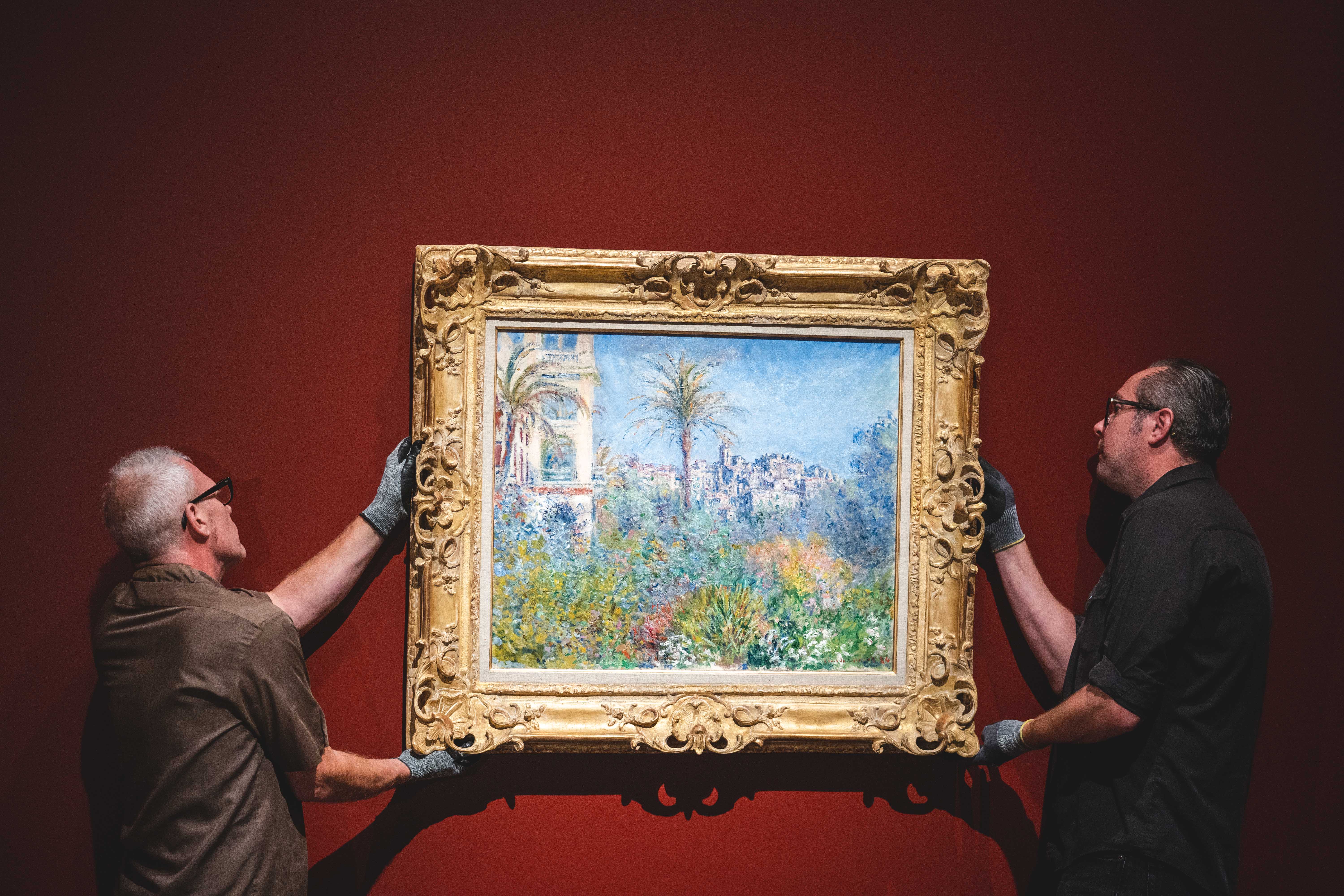Later this month the Denver Art Museum (DAM) is unveiling the exhibition Claude Monet: The Truth of Nature and will serve as the only US stop for the traveling landmark show. It’s the most comprehensive collection of Monet’s work to come to America in more than 20 years, featuring 124 paintings that encompass the entire career of the famed artist. With so many valuable works, the DAM’s installation process for the show will take over three weeks. Today, we were able to go behind the scenes to witness a process typically shrouded in mystery —
The upcoming exhibition is expansive in what it covers — with paintings from as early as 1858 to as late as a few months before the French Impressionist’s death in 1926 — and also in physicality. Covering nearly 20,000 square feet and spanning across three gallery rooms, Claude Monet: The Truth of Nature is a beast of an exhibit to install.
For starters, the collection hosts pieces from more than 70 lenders that come from all corners of the globe — Australia, Japan and Brazil to name a few. Each artwork that is lent to a show like this comes with its own courier, who is responsible for a condition report detailing any changes to the work or the frame it’s in after the journey. These couriers must approve the condition before installers attach it to its designated spot on the wall, which takes a great deal of coordinating by the staff at the DAM (or any other borrowing institution). Today’s courier came from Germany, where the painting Villas at Bordighera resides at the Museum Barberini — the institution that co-organized this exhibition with the DAM.
The condition report lasted roughly 15 minutes while the courier moved over the 135-year-old painting and its golden-colored frame, wearing a magnifying visor. Using two sources of reference — one printed and the other digital — she compared cracks, color tone and other elements. Everyone in the gallery fell silent as if we were watching an operation on a well-known and well-loved celebrity. Once every inch was inspected, the courier signed the report and stepped back to allow the installers to hang it on the wall, where two expertly aligned hooks awaited its weight.
Because each artwork in this exhibition is valuable and only getting older, the DAM seeks to minimize the amount of contact and handling made with each one. Traveling exhibitions, although good for accessibility to such historic artwork, are bad for the artwork itself. In order to minimize the movement and risk of damage, the organization of where to hang each piece is accomplished by placeholding the spot on the wall with a template of brown paper and a low-resolution photograph. The brown paper squares are cut out to the exact dimensions of each artwork, including the frames. That way, curators move the brown paper rather than the artwork until they are 100% sure where each one will end up. With this technique, the actual installation of a painting does not last more than 30 minutes.
Over the next 10 days, the staff at the DAM will continue to rotate through this intense process until all 124 paintings, illustrations and drawings are on the walls. Then, it will be open to the public from October 21, 2019 until February 2, 2020. After that, everything will once again travel — this time to Museum Barberini for the spring.
—
The painting in these photographs is Villas at Bordighera by Claude Monet, 1884, oil paint on canvas.
For more information, visit the Denver Art Museum website.







